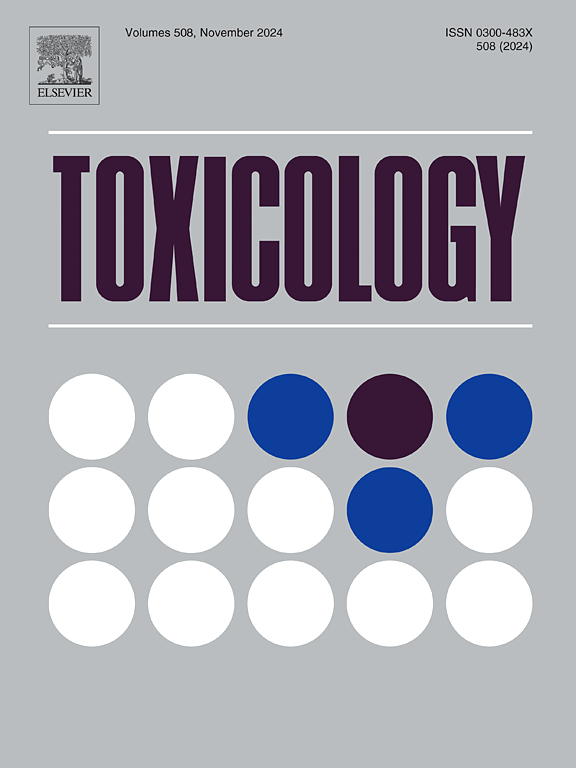The correlation between lung surfactant function inhibition in vitro and the effect on breathing of mice during inhalation exposure – A study of spray-formulated engine/brake cleaners and lubricating products
IF 4.6
3区 医学
Q1 PHARMACOLOGY & PHARMACY
引用次数: 0
Abstract
Moving parts in motors require maintenance, both lubrication for smooth operation and de-greasing for cleaning and repair. Since these motor parts are hard to reach, cleaning and lubrication products are often applied by spraying. However, the aerosol spray of the product can potentially reach the breathing zone of the worker and end up in the lungs. We investigated eight products and two single ingredients for their acute effects on the lungs. The effects of the aerosolized substances were tested in an in vitro model for lung surfactant function inhibition. The in vitro results were then compared to the effects of the aerosolized substances on the breathing parameters of exposed mice, measured in whole-body plethysmographs. No-observed-adverse–effect-concentrations were set based on the endpoint of reduction in tidal volume. When a reduction in tidal volume was used as the ´true´ result, the in vitro test for lung surfactant inhibition was 80 % accurate at predicting if the substance affected tidal volume in exposed mice. The ranking of test substances were similar between the in vivo and in vitro results with the exception of (2-methoxymethylethoxy)propanol (substance A). This substance did not inhibit lung surfactant function, but was potent at reducing tidal volume in mice. In conclusion, lung surfactant function inhibition in vitro can be used as a screening tool for acute effects of ingredients in- or formulated -spray products on the lungs.
体外肺表面活性物质功能抑制与吸入暴露对小鼠呼吸影响的相关性——一项喷雾配方发动机/制动器清洁剂和润滑产品的研究。
电机中的运动部件需要维护,既要润滑以使运行平稳,又要脱脂以进行清洁和维修。由于这些电机部件很难接触到,清洁和润滑产品通常采用喷涂的方式。然而,该产品的气溶胶喷雾可能会到达工人的呼吸区,最终进入肺部。我们调查了八种产品和两种单一成分对肺部的急性影响。在体外肺表面活性物质抑制模型中检测了雾化物质的作用。然后将体外结果与雾化物质对暴露小鼠呼吸参数的影响进行比较,呼吸参数是通过全身容积描记仪测量的。未观察到的不良反应浓度是基于潮汐量减少的终点设定的。当以潮气量的减少作为“真实”结果时,肺表面活性物质抑制的体外试验在预测该物质是否影响暴露小鼠的潮气量方面准确率为80%。除(2-甲氧基甲基乙氧基)丙醇(物质A)外,实验物质在体内和体外的排名相似。该物质不抑制肺表面活性物质的功能,但能有效地降低小鼠的潮气量。综上所述,肺表面活性物质的体外功能抑制可以作为一种筛选工具,用于筛选成分或配方喷雾产品对肺的急性影响。
本文章由计算机程序翻译,如有差异,请以英文原文为准。
求助全文
约1分钟内获得全文
求助全文
来源期刊

Toxicology
医学-毒理学
CiteScore
7.80
自引率
4.40%
发文量
222
审稿时长
23 days
期刊介绍:
Toxicology is an international, peer-reviewed journal that publishes only the highest quality original scientific research and critical reviews describing hypothesis-based investigations into mechanisms of toxicity associated with exposures to xenobiotic chemicals, particularly as it relates to human health. In this respect "mechanisms" is defined on both the macro (e.g. physiological, biological, kinetic, species, sex, etc.) and molecular (genomic, transcriptomic, metabolic, etc.) scale. Emphasis is placed on findings that identify novel hazards and that can be extrapolated to exposures and mechanisms that are relevant to estimating human risk. Toxicology also publishes brief communications, personal commentaries and opinion articles, as well as concise expert reviews on contemporary topics. All research and review articles published in Toxicology are subject to rigorous peer review. Authors are asked to contact the Editor-in-Chief prior to submitting review articles or commentaries for consideration for publication in Toxicology.
 求助内容:
求助内容: 应助结果提醒方式:
应助结果提醒方式:


